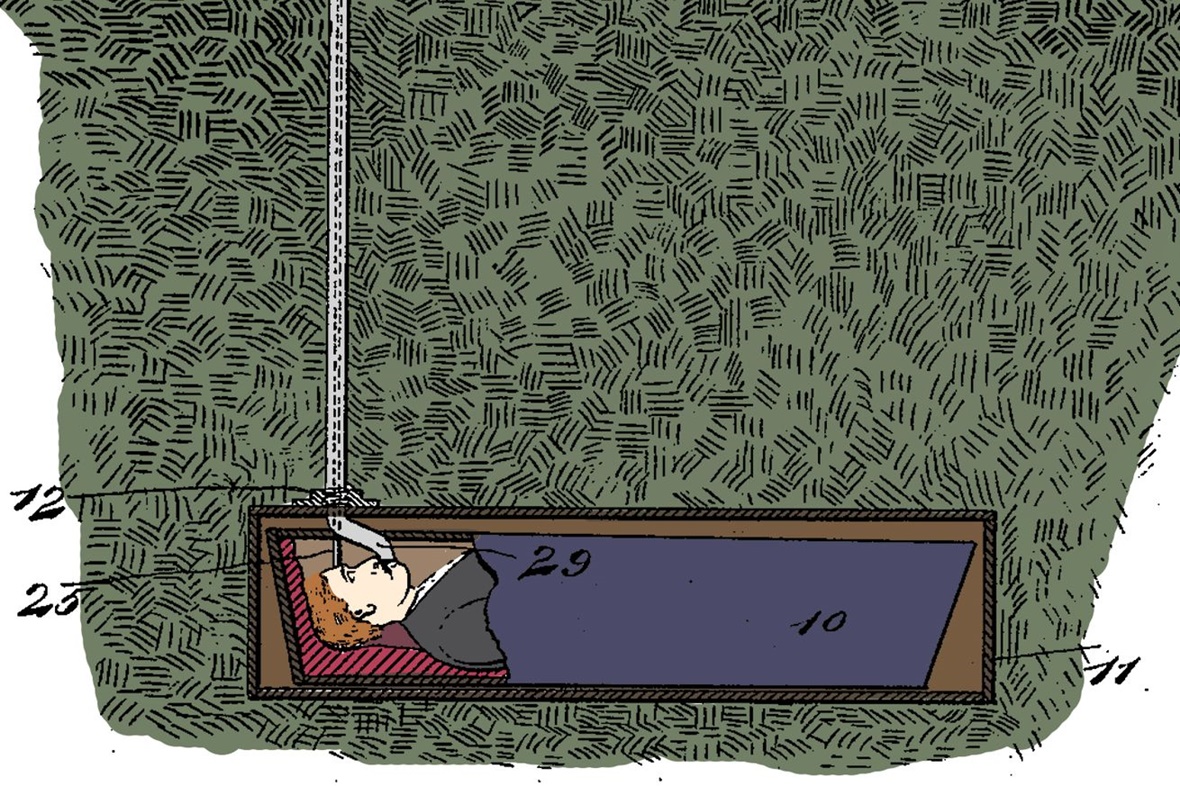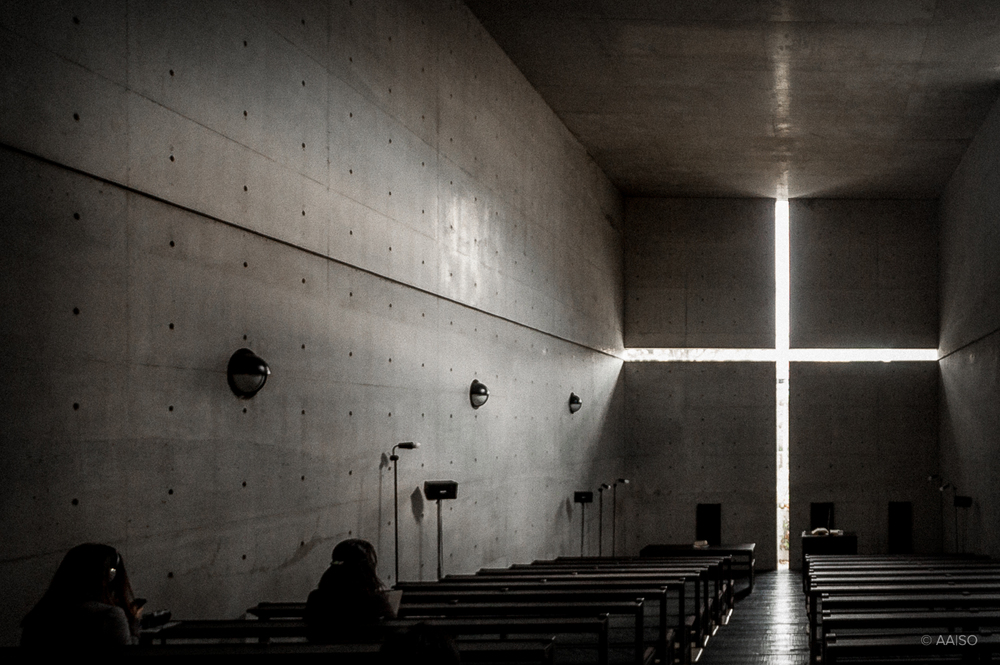Death: Grave Signal, H Deveau
Osaka, Japan. A crucifix is cut into the concrete wall behind the altar. It is backlit in the morning as it faces east. This box has no material content, only space. It cannot be optimised; it can only be experienced. Its emptiness is an invitation for the spiritual to enter. The implied function – a church – is denoted only through material absence. It is manifested through light entering space; it is immaterial. Zen meets Christ. Does it always take an encounter with ‘the other’ to comprehend the nature of things? Who is the other when it comes to the box? Is it in churches, whose very mission it was meant to replace, that the box ultimately finds refuge?
Amsterdam, the Netherlands, 1975. Black boxes are being stacked in a frame of prefabricated concrete junctions to become an old people’s home. It takes an established critic to identify the symbolic implication: crosses and coffins. The building goes on to acquire global fame. It is meanwhile demolished.
The ultimate box is the one we all end up in.

26 June 1894 H.Deveau Grave signal. Nobody likes to be buried alive, so its great that Henri Deveau patented a grave signal in 1894. During the 1890s, there was a mass fear of waking up alive after being mistaken for a corpse. When the bell is rung, anyone walking through the graveyard will have the Bejesus scared out of him.

The Church of the Light, built in 1989 in the town of Ibraki, located right outside Osaka, embraces architect Tadao Ando’s philosophical framework between nature and architecture through the way in which light can define and create new spatial perceptions equally, if not more so, as that of his concrete structures.